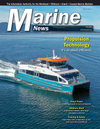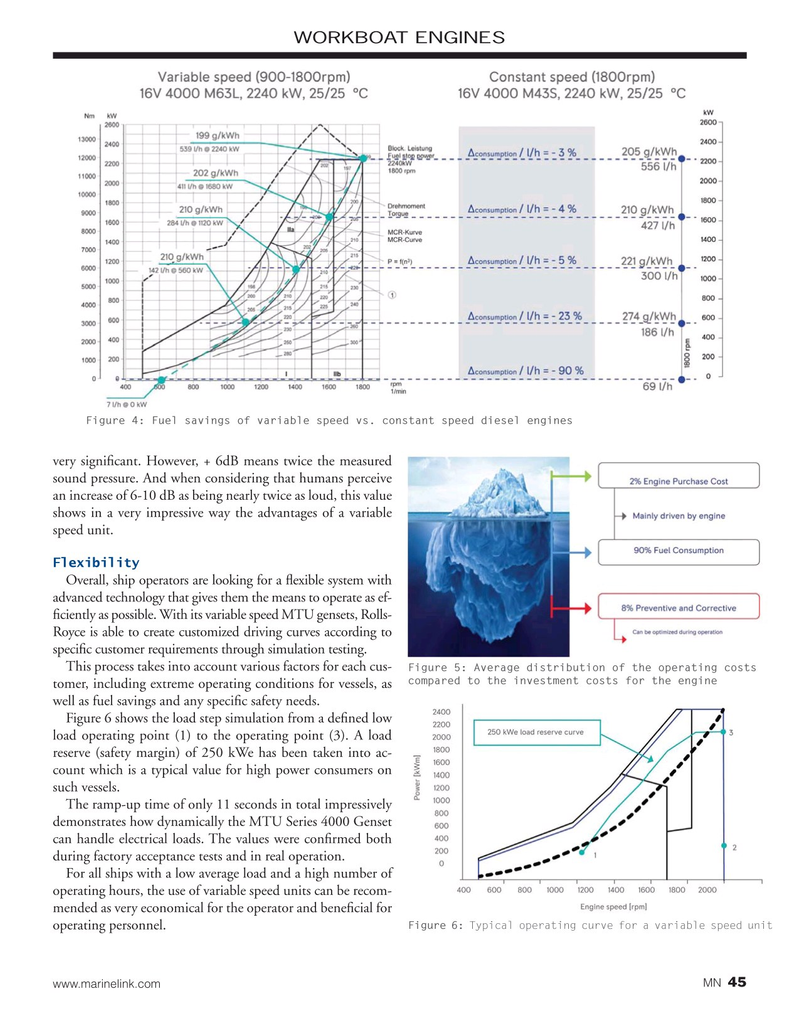
Page 45: of Marine News Magazine (July 2020)
Propulsion Technology
Read this page in Pdf, Flash or Html5 edition of July 2020 Marine News Magazine
WORKBOAT ENGINES
Figure 4: Fuel savings of variable speed vs. constant speed diesel engines very signi?cant. However, + 6dB means twice the measured sound pressure. And when considering that humans perceive an increase of 6-10 dB as being nearly twice as loud, this value shows in a very impressive way the advantages of a variable speed unit.
Flexibility
Overall, ship operators are looking for a ?exible system with advanced technology that gives them the means to operate as ef- ?ciently as possible. With its variable speed MTU gensets, Rolls-
Royce is able to create customized driving curves according to speci?c customer requirements through simulation testing.
This process takes into account various factors for each cus-
Figure 5: Average distribution of the operating costs compared to the investment costs for the engine tomer, including extreme operating conditions for vessels, as well as fuel savings and any speci?c safety needs.
Figure 6 shows the load step simulation from a de?ned low load operating point (1) to the operating point (3). A load reserve (safety margin) of 250 kWe has been taken into ac- count which is a typical value for high power consumers on such vessels.
The ramp-up time of only 11 seconds in total impressively demonstrates how dynamically the MTU Series 4000 Genset can handle electrical loads. The values were con?rmed both during factory acceptance tests and in real operation.
For all ships with a low average load and a high number of operating hours, the use of variable speed units can be recom- mended as very economical for the operator and bene?cial for
Figure 6: Typical operating curve for a variable speed unit operating personnel.
45 www.marinelink.com MN

 44
44

 46
46
